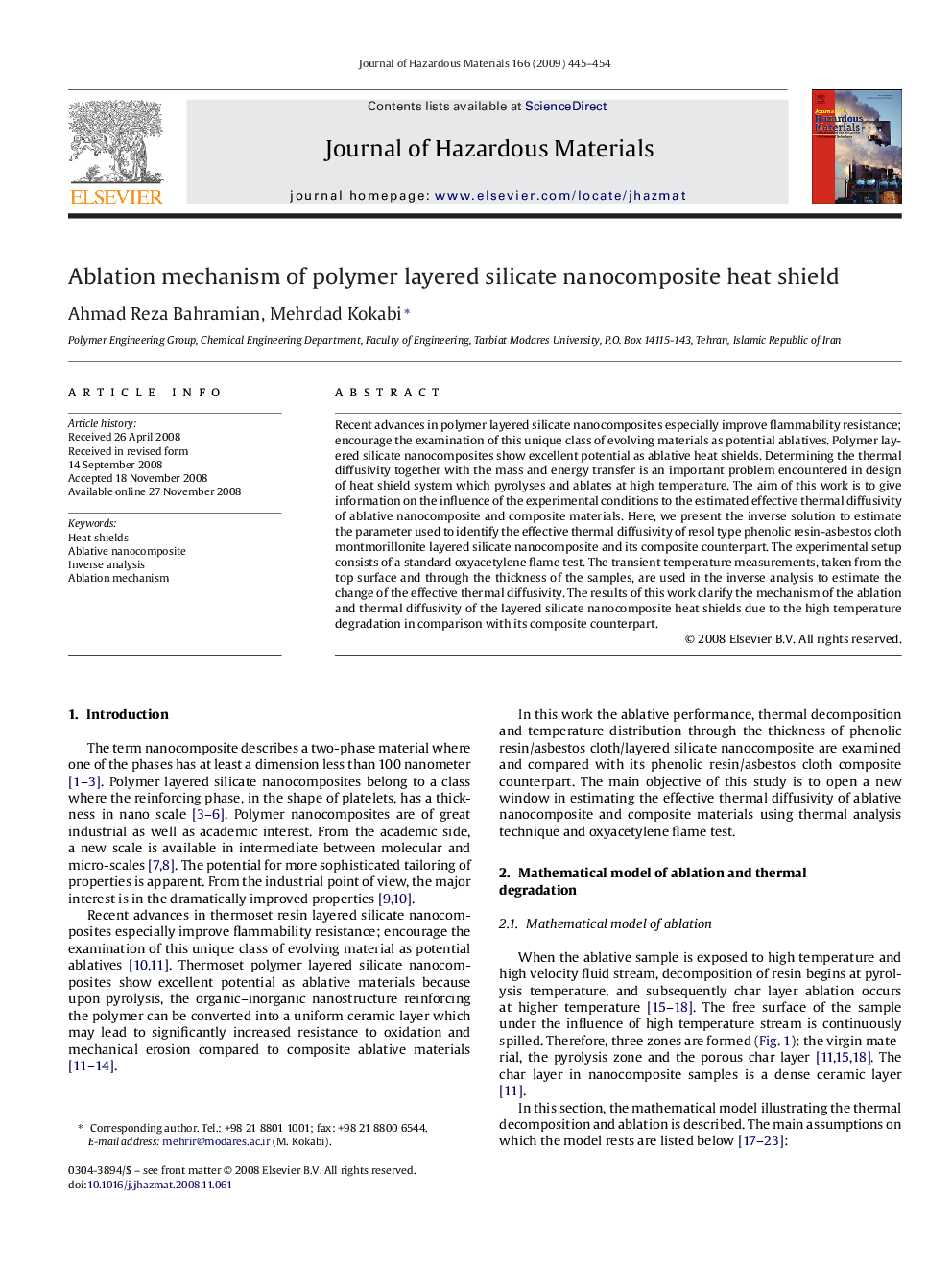| Article ID | Journal | Published Year | Pages | File Type |
|---|---|---|---|---|
| 581899 | Journal of Hazardous Materials | 2009 | 10 Pages |
Abstract
Recent advances in polymer layered silicate nanocomposites especially improve flammability resistance; encourage the examination of this unique class of evolving materials as potential ablatives. Polymer layered silicate nanocomposites show excellent potential as ablative heat shields. Determining the thermal diffusivity together with the mass and energy transfer is an important problem encountered in design of heat shield system which pyrolyses and ablates at high temperature. The aim of this work is to give information on the influence of the experimental conditions to the estimated effective thermal diffusivity of ablative nanocomposite and composite materials. Here, we present the inverse solution to estimate the parameter used to identify the effective thermal diffusivity of resol type phenolic resin-asbestos cloth montmorillonite layered silicate nanocomposite and its composite counterpart. The experimental setup consists of a standard oxyacetylene flame test. The transient temperature measurements, taken from the top surface and through the thickness of the samples, are used in the inverse analysis to estimate the change of the effective thermal diffusivity. The results of this work clarify the mechanism of the ablation and thermal diffusivity of the layered silicate nanocomposite heat shields due to the high temperature degradation in comparison with its composite counterpart.
Keywords
Related Topics
Physical Sciences and Engineering
Chemical Engineering
Chemical Health and Safety
Authors
Ahmad Reza Bahramian, Mehrdad Kokabi,
